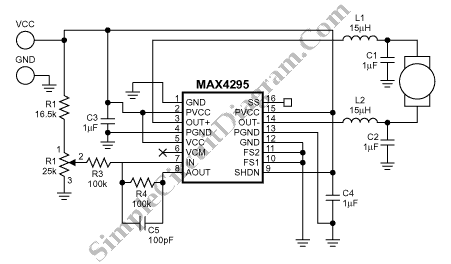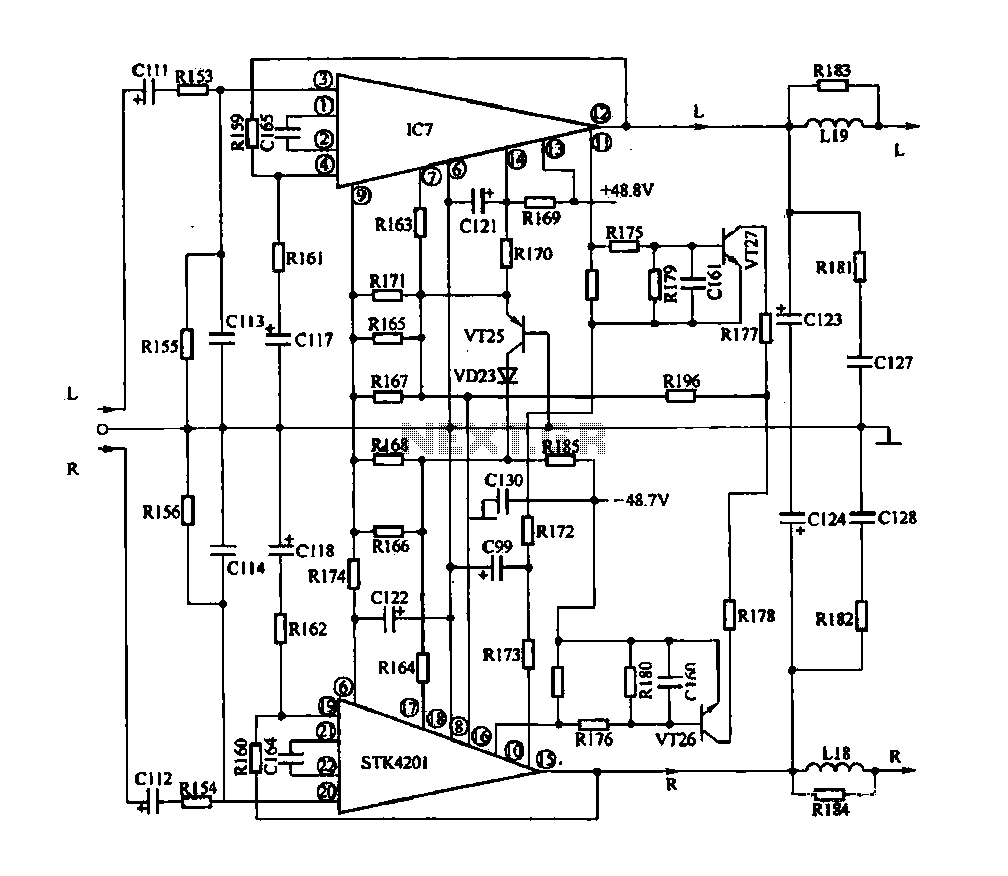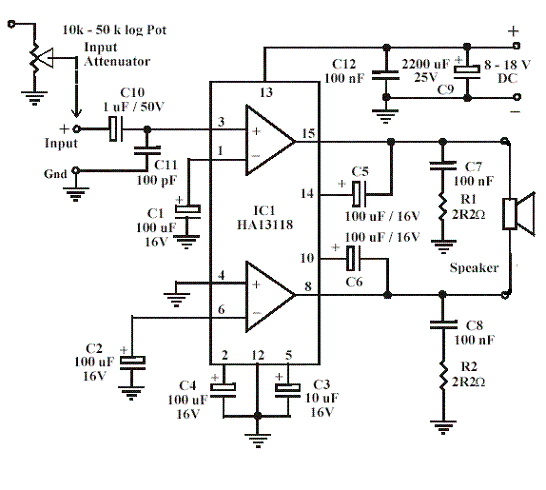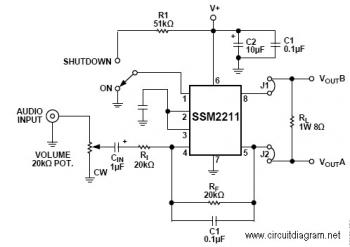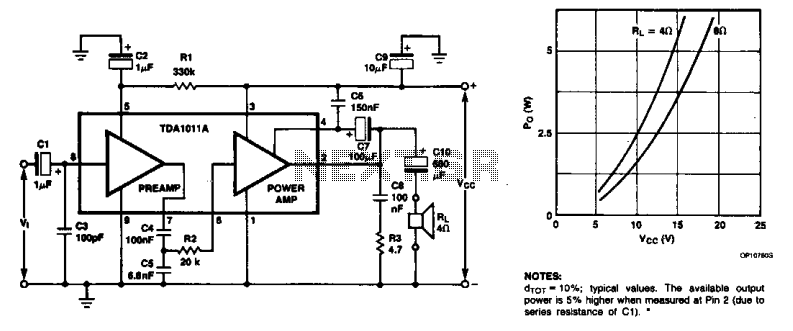
Quality Stereo Wireless Microphone or Audio Link
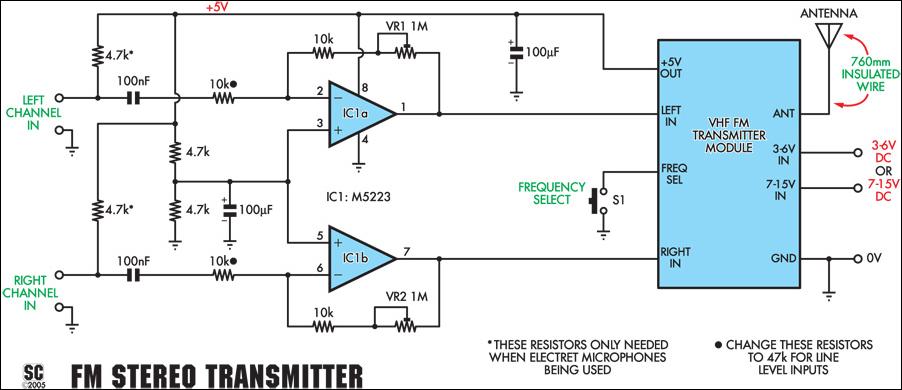
This stereo FM wireless microphone serves as an excellent audio link. Testing revealed a reliable range exceeding 50 meters. It is distinct from previous wireless microphones due to its stereo capability, which delivers unexpectedly high-quality sound. The range was tested significantly beyond 50 meters, maintaining a noise-free performance, suggesting potential for even greater distances. The construction of the unit is straightforward, requiring minimal setup, and it is affordably priced. Although some may assume low quality due to the low cost, users may be pleasantly surprised. The assembly process is simplified as the transmitter module is pre-designed. The user only needs to assemble the microphone module, which includes the electret microphones, preamplifier, and level controls, then solder the transmitter module in a "piggyback" configuration. The transmitter module is crystal-locked, eliminating drift issues common in earlier wireless microphones. It features a synthesis circuit allowing selection among seven frequencies ranging from 106.7 MHz to 107.7 MHz. Additionally, the transmitter module can function at line level, suitable for transmitting audio throughout a home, with a sensitivity of approximately 100 mV. Oatley Electronics, the kit's designer, offers the transmitter module separately. The kit provides options for two power supply levels: 3-6V or 7-15V DC, with the latter resulting in lower current consumption. A "5V out" rail is included to power the preamplifier module. The kit comes with two electret microphone inserts that can be directly soldered to the PCB for a fully integrated project or connected via mini shielded coax cables. Alternatively, users can utilize conventional microphones, whether electret or dynamic, although no specific provisions for plugging them in have been included.
This stereo FM wireless microphone system is designed to deliver high-quality audio transmission over a considerable range, making it suitable for various applications, including public speaking, performances, and home audio distribution. The system's stereo capability enhances audio fidelity, making it an appealing choice for users seeking superior sound quality. The crystal-locked transmitter module ensures stable frequency transmission, reducing the likelihood of interference and drift, which is a common issue in analog wireless systems.
The assembly process is optimized for ease of use, allowing users with basic soldering skills to construct the device without extensive technical knowledge. The inclusion of a synthesis circuit that offers multiple frequency options enhances flexibility, enabling users to select the best frequency for their environment, thus minimizing potential interference from other devices.
The power supply versatility allows for adaptability to different operating conditions, providing options that cater to both low-power and higher-performance scenarios. The additional "5V out" rail is particularly beneficial for powering other components, such as the preamplifier, simplifying the overall design and reducing the need for external power sources.
The microphone inserts included in the kit enhance the project's self-containment, while the option for using standard microphones provides users with the flexibility to customize their setup according to specific needs. Overall, this FM wireless microphone system presents an accessible yet high-quality solution for audio transmission, encouraging experimentation and use in various settings.This stereo FM wireless microphone also makes a great quality audio link. We tested it to beyond 50 meters and it was rock solid. It`s certainly not the first wireless microphone we`ve ever published but this one is a little different. It`s stereo, providing surprisingly good quality sound. Second, it has a really good range. We tested it at well over 50m and it was still performing very well noise-free, in fact but at the time we couldn`t get our receiver any further away. So it`s likely to have even better range than that. It`s easy to build, requires very little setup. and it`s cheap! In fact, the low price might turn some people off, thinking it`s low quality. Try it - and be pleasantly surprised! Third, it really is simple to build the hard work (the transmitter module) is already done for you. It`s just a matter of assembling the microphone module, which contains the electret mics themselves, preamp and level controls, and soldering the transmitter module onto it, "piggy back" style.
Finally, the transmitter module is crystal-locked, so you won`t have the drift probles of some earlier wireless microphones. And just in case you were wondering, that doesn`t mean the output is locked to one particular frequency it has a nifty synthesis circuit built in to give you the choice of seven different frequencies between 106.
7MHz and 107. 7MHz. By the way, the transmitter module is quite capable of operating at line level if you want just a line level transmitter (eg, to feed an audio program around your home). Sensitivity is about 100mV. Oatley Electronics, who designed the kit, have the transmitter module available by itself if that`s what you`re after.
But more on that anon. You also have the choice of two power supply levels 3-6V or 7-15V DC. The latter results in a lower current drain. The transmitter module also has a "5V out" rail to supply power to the preamp module. Two electret microphone inserts are supplied in the kit. These can be soldered direct to the PC board to make it a fully self-contained project or they can be attached to the board via suitable lengths of mini shielded coax cable. A third option is to use "proper" microphones they can be electret or dynamic types but no provision has been made for plugging these in.
🔗 External reference
This stereo FM wireless microphone system is designed to deliver high-quality audio transmission over a considerable range, making it suitable for various applications, including public speaking, performances, and home audio distribution. The system's stereo capability enhances audio fidelity, making it an appealing choice for users seeking superior sound quality. The crystal-locked transmitter module ensures stable frequency transmission, reducing the likelihood of interference and drift, which is a common issue in analog wireless systems.
The assembly process is optimized for ease of use, allowing users with basic soldering skills to construct the device without extensive technical knowledge. The inclusion of a synthesis circuit that offers multiple frequency options enhances flexibility, enabling users to select the best frequency for their environment, thus minimizing potential interference from other devices.
The power supply versatility allows for adaptability to different operating conditions, providing options that cater to both low-power and higher-performance scenarios. The additional "5V out" rail is particularly beneficial for powering other components, such as the preamplifier, simplifying the overall design and reducing the need for external power sources.
The microphone inserts included in the kit enhance the project's self-containment, while the option for using standard microphones provides users with the flexibility to customize their setup according to specific needs. Overall, this FM wireless microphone system presents an accessible yet high-quality solution for audio transmission, encouraging experimentation and use in various settings.This stereo FM wireless microphone also makes a great quality audio link. We tested it to beyond 50 meters and it was rock solid. It`s certainly not the first wireless microphone we`ve ever published but this one is a little different. It`s stereo, providing surprisingly good quality sound. Second, it has a really good range. We tested it at well over 50m and it was still performing very well noise-free, in fact but at the time we couldn`t get our receiver any further away. So it`s likely to have even better range than that. It`s easy to build, requires very little setup. and it`s cheap! In fact, the low price might turn some people off, thinking it`s low quality. Try it - and be pleasantly surprised! Third, it really is simple to build the hard work (the transmitter module) is already done for you. It`s just a matter of assembling the microphone module, which contains the electret mics themselves, preamp and level controls, and soldering the transmitter module onto it, "piggy back" style.
Finally, the transmitter module is crystal-locked, so you won`t have the drift probles of some earlier wireless microphones. And just in case you were wondering, that doesn`t mean the output is locked to one particular frequency it has a nifty synthesis circuit built in to give you the choice of seven different frequencies between 106.
7MHz and 107. 7MHz. By the way, the transmitter module is quite capable of operating at line level if you want just a line level transmitter (eg, to feed an audio program around your home). Sensitivity is about 100mV. Oatley Electronics, who designed the kit, have the transmitter module available by itself if that`s what you`re after.
But more on that anon. You also have the choice of two power supply levels 3-6V or 7-15V DC. The latter results in a lower current drain. The transmitter module also has a "5V out" rail to supply power to the preamp module. Two electret microphone inserts are supplied in the kit. These can be soldered direct to the PC board to make it a fully self-contained project or they can be attached to the board via suitable lengths of mini shielded coax cable. A third option is to use "proper" microphones they can be electret or dynamic types but no provision has been made for plugging these in.
🔗 External reference
